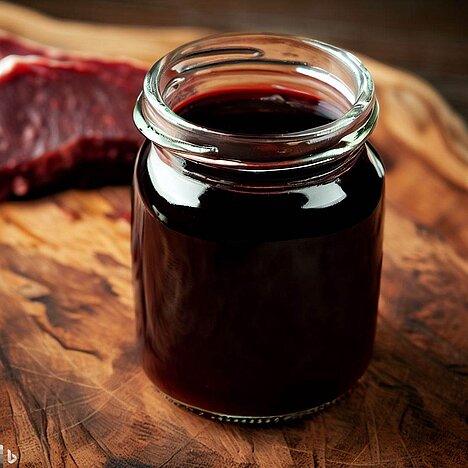Goat's blood

Goat's blood is a natural and healthy component of the BARF diet for dogs. In this article, you will find out what goat's blood is, what the advantages and disadvantages are and how you can feed it to your dog.
What is goat's blood?
Goat blood is the blood of slaughtered goats, usually from regional and species-appropriate husbandry. The blood is supplied frozen in bottles or bags and can be portioned and refrozen as required after thawing.
What are the benefits of goat's blood for dogs?
Goat's blood has many benefits for your dog's health and well-being:
- It contains many vitamins, such as vitamins A, B12, C and K, which are important for vision, blood formation, the immune system and blood clotting.
- It contains many trace elements, such as iron, zinc, copper and selenium, which are important for oxygen supply, skin and coat health, thyroid function and antioxidant defense.
- It contains many proteins that are important for muscle building, wound healing and hormone production.
- It supports digestion as it moisturizes the gastrointestinal tract and promotes intestinal flora.
- It strengthens the immune system as it contains antibodies that can protect against infections.
- It tastes very good to many dogs and can be used as a treat or appetizer.
What are the disadvantages of goat's blood for dogs?
Goat's blood also has some disadvantages that you should be aware of:
- It can cause allergies or intolerances if your dog is sensitive to goat meat or milk.
- It can cause diarrhea or vomiting if your dog eats too much of it or it thaws too quickly.
- It can lead to parasite infestation if the blood is not processed or stored hygienically.
- It can lead to unpleasant odors if the blood is not kept cool or is consumed quickly.
How do you feed goat's blood to dogs?
Goat's blood should always be given as a supplement to your dog's normal food ration. The amount depends on the size, age and activity level of your dog. As a guideline, you can give around 1 to 2 teaspoons per 10 kg of body weight per day.
You should always allow the blood to thaw slowly and only give as much as your dog eats within 24 hours. You can refreeze the remaining blood or store it in the fridge.
You can give the blood on its own or mix it with other food components. For example, you can puree it with vegetables, fruit or herbs or mix it with meat, offal or bones.
You should make sure that your dog always has enough fresh water available, as the blood increases the need for fluids.
Goat's blood is a valuable component of the BARF diet for dogs. It has many health benefits, but also some disadvantages that you should be aware of. You should always feed the blood in moderation and pay attention to quality and hygiene.
If you want to do something good for your dog, you can offer him some goat's blood from time to time. Your dog will thank you for it!
If you notice any signs of hypersensitivity or poisoning in your dog, you should see your vet immediately. We are not a substitute for a vet, but we try to be as accurate as possible. Every dog reacts differently and we recommend you get a second opinion or consult your vet if in doubt.
Stay healthy and take good care of your four-legged friend!😊